Art & Exhibitions
Taryn Simon Goes Nuclear, Literally, at Moscow’s Garage Museum
Simon's artistic ambition even reaches 1,000 years into the future.
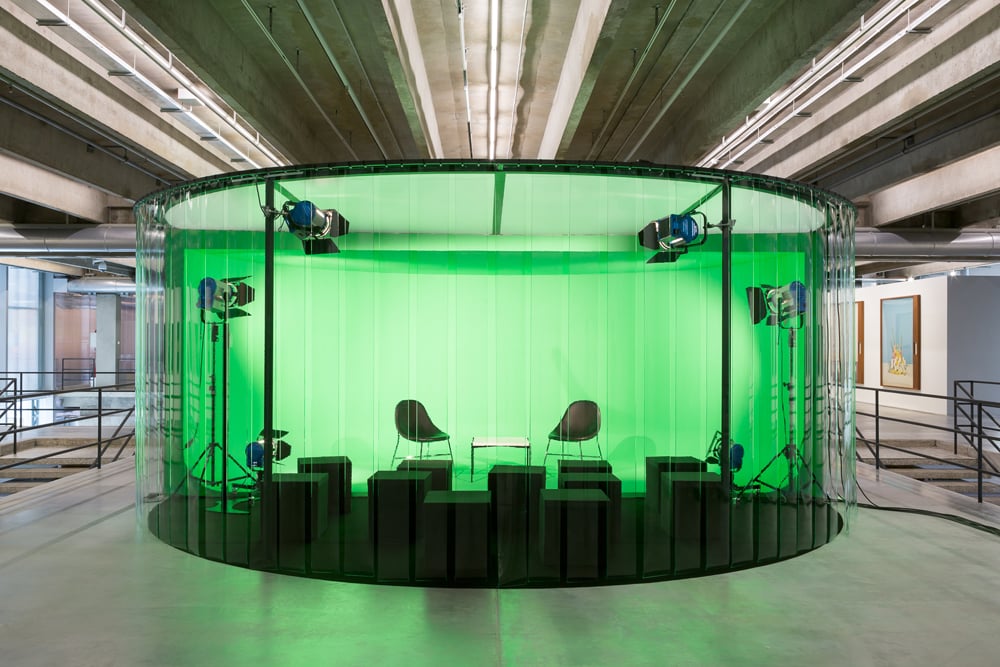
Simon's artistic ambition even reaches 1,000 years into the future.

Cait Munro

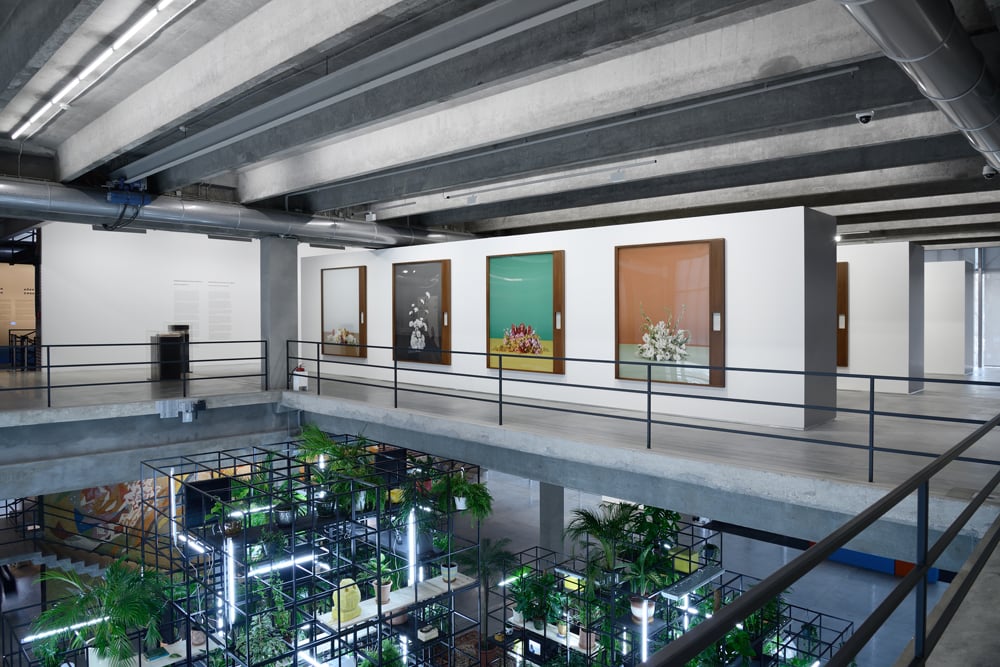
Taryn Simon, Action Research / The Stagecraft of Power (2016).
Photo: Courtesy of the Garage Museum of Contemporary Art.
When you think of major governmental treaties, floral arrangements probably aren’t the first thing that spring to mind. But New York-based multimedia artist Taryn Simon has a way of noticing the kinds of things that most people overlook.
For her series “Paperwork, and the Will of Capital,” which opened on March 17 at the Garage Museum as part of Simon’s “Action Research / The Stagecraft of Power” exhibition, she has recreated and photographed the floral arrangements from various diplomatic meetings ranging from the 1944 Bretton Woods conference that led to the establishment of the International Monetary Fund through a 2014 summit between the Australian and Cambodian governments regarding refugee settlements.
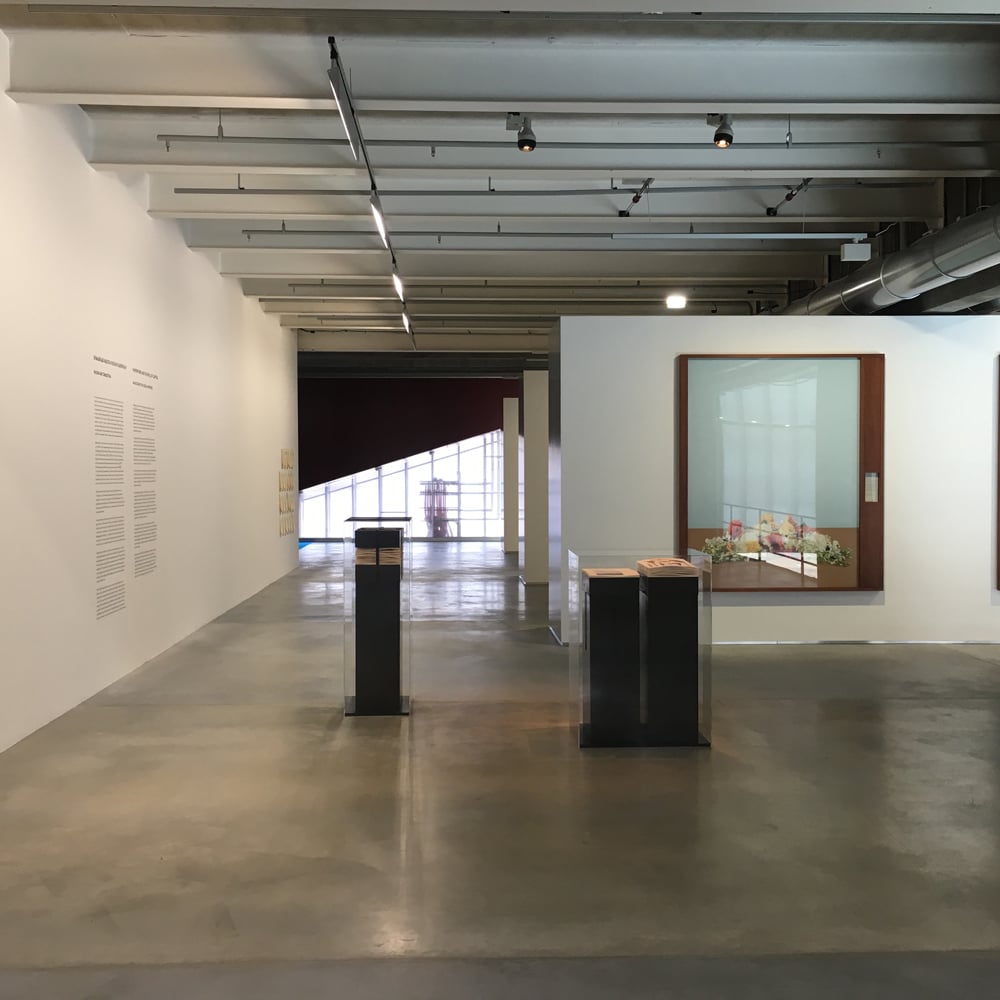
Taryn Simon, Action Research / The Stagecraft of Power (2016).
Photo: Courtesy of the Garage Museum of Contemporary Art.
“I found a picture of Mussolini and Chamberlain and Hitler, where they’re all sitting around at the Munich conference with this bouquet of flowers,” she said while seated in the Moscow museum’s cozy cafe. “And I was imagining those flowers literally listening to them and all of their designs on the world and economies and governments.”
Simon began looking through image archives for similar photographs before tapping a botanist to aid in identifying the individual plants. She then had 4,000 plant specimens mailed from the famed Aalsmeer Flower Auction in the Netherlands to her studio in New York, where she exhaustively recreated the historic arrangements, assembling and photographing 12 versions of each bouquet 12 times to result in 432 photographs, as well as pressing and categorizing the contents of one of each bouquet to be presented alongside the images as her first foray into sculpture. Both are also on view at Gagosian, Simon’s gallery, in New York through March 26.
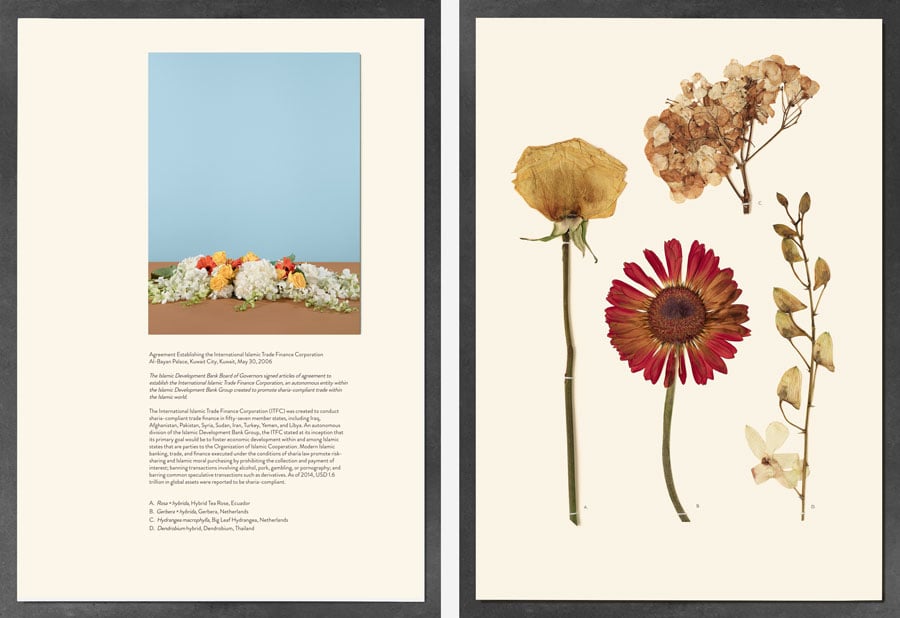
Taryn Simon, Agreement Establishing the International Islamic Trade Finance Corporation Al-Bayan Palace, Kuwait City, Kuwait, May 30, 2006
Rosa × hybrida, Hybrid Tea Rose, Ecuador, Gerbera × hybrida, Gerbera, Netherlands, Hydrangea macrophylla, Big Leaf Hydrangea, Netherlands, Dendrobium hybrid, Dendrobium, Thailand (2015). Photo: Taryn Simon/Gagosian Gallery.
Unbridled ambition, rigorous research, and a fascination with exposition define Simon’s practice. This is nowhere more evident in her “Black Square” series, presented in its entirety for the first time as part of the exhibition.
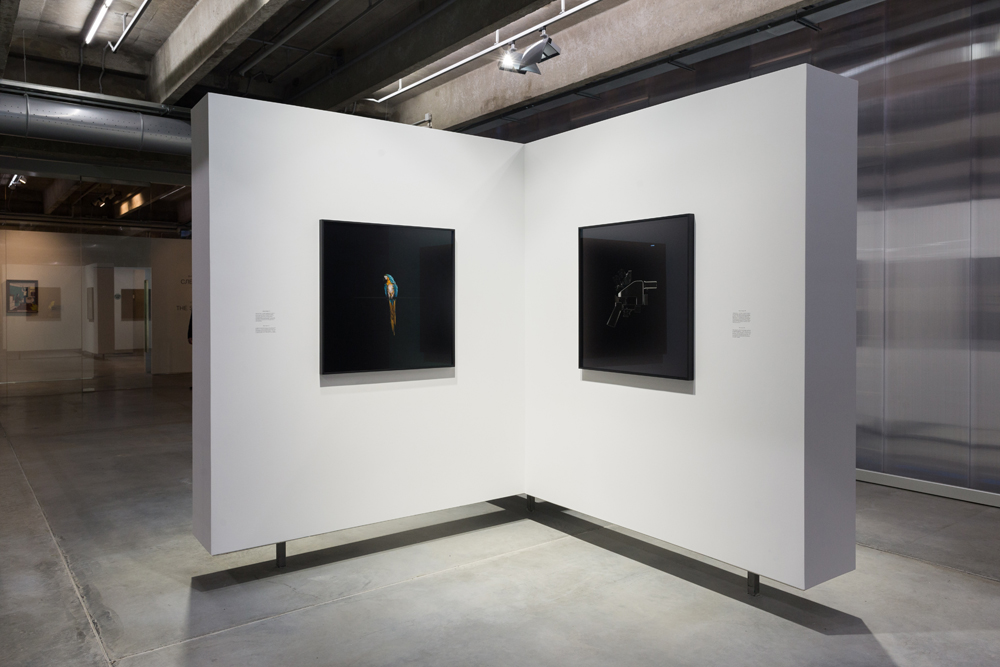
Taryn Simon, Action Research / The Stagecraft of Power (2016).
Photo: Courtesy of the Garage Museum of Contemporary Art.
Inspired by Malevich’s canonical 1915 painting by the same name, the series features photographs of strange phenomena Simon has inadvertently encountered during research for other projects—a wallet made of human skin, Knopf’s rejection letter for George Orwell’s Animal Farm (“strange and pointless manuscript in which animals take over a farm and run it”), a 3D-printed handgun, and a 1939 guide to the English language should it ever become extinct.
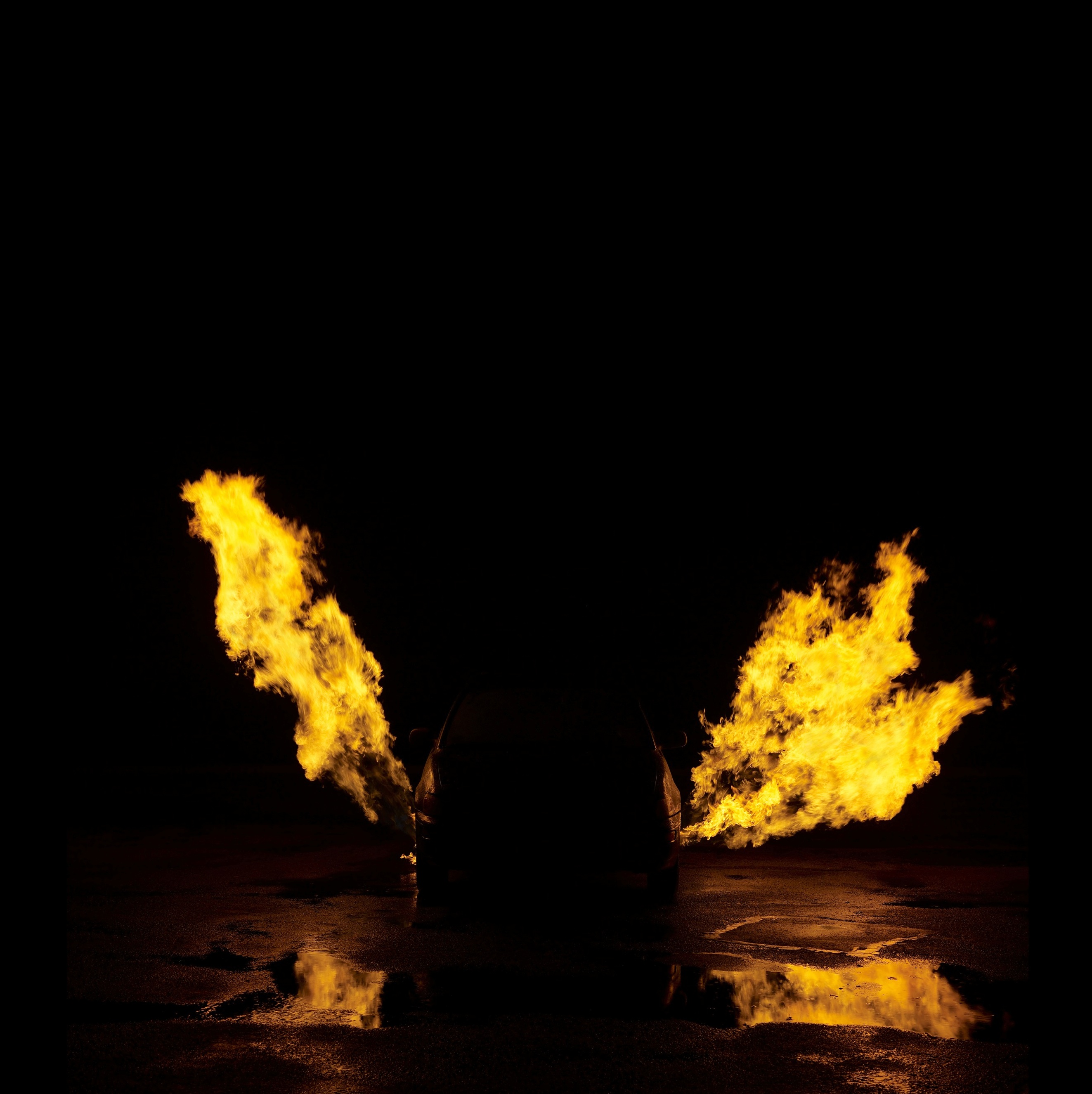
Taryn Simon, Black Square IV, The Blaster, South Africa, Invented by Charl Fourie as an Anti-Hijacking system photographed installed on a Toyota Corolla, one of the most frequently carjacked vehicles in South Africa (2009).
Photo: Gagosian Gallery.
But the most fascinating oddity in series is Black Square XVII, Simon’s most ambitious project to date, which was produced as part of the museum’s field research program in 2015. Simon worked alongside nuclear physicists at Russia’s State Atomic Energy Corporation (ROSATOM) to prepare a black square made of nuclear material, which is currently being stored in a facility outside Moscow. When, in 3015, it is neutralized and safe to exhibit (1,000 years after its creation, and 2,000 after the creation of Malevich’s black square) it will be displayed at Garage in a customized void that the artist worked alongside architect Rem Koolhaas to design.
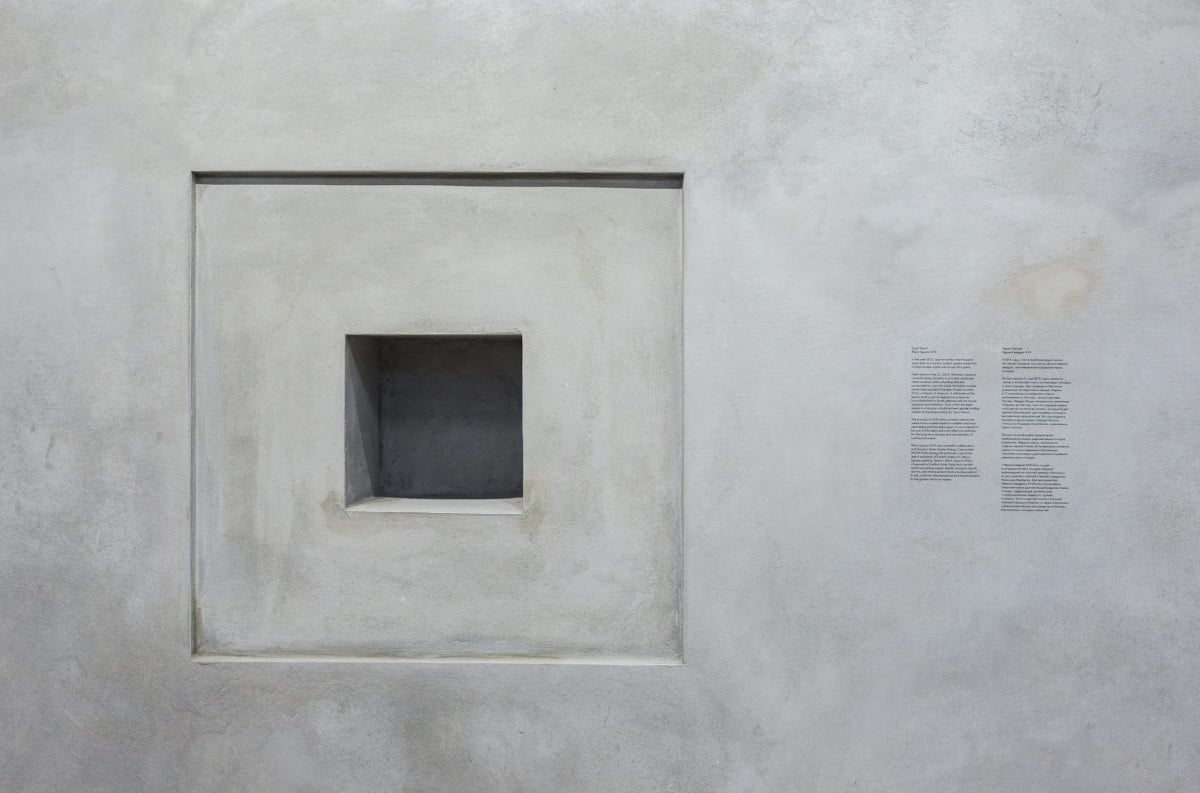
Taryn Simon, Black Square XVII, Garage Museum of Contemporary Art (2015).
© Garage Museum of Contemporary Art
“Part of this project I think is very much to do with, from an artist’s perspective, how to work with a museum and get a commitment,” said curator Kate Fowle during a tour. “Because artists have often experienced that works will get shown and then disappear, or they’ll go into the collection and just never come out again. So it’s like, how can we start to push the ways that artists can have spaces in the building and projects that can be ongoing, and really start to think about collecting in a different way.”
Of course, there’s no guarantee that the museum will exist in 1,000 years. In fact, there’s no guarantee that we’ll have museums or artists at all, or that, as Simon notes, anyone will be able to decipher the English language enough to read her instructions for how to display the square.
“It’s this idea of making art for a generation that’s not ours,” Simon said. “For me, the important thing is, in the way that Malevich’s black square kind of disappeared and then came back, I’m imagining it passing through different politics and periods and even potentially being lost underground, how these things will operate over a long period of time. And then, when it finally is 1,000 years from now, will somebody want to preserve the black square?”
It took four years to negotiate the bureaucracy necessary to actualize Black Square XVII. “It started almost as a joke,” the artist said. “It was just this dream that anything was possible, but I did feel like maybe I had put myself up against a limitation.”
She is currently working on a documentary about the project, described in press materials as “the surreal story of an American citizen constructing an object with a Russian nuclear agency,” much of which has had to be filmed by proxy following specific instructions from Simon due to the fact that she doesn’t have Russian citizenship and therefore cannot enter the ROSATOM facility.

Taryn Simon, Action Research / The Stagecraft of Power (2016).
Photo: Courtesy of the Garage Museum of Contemporary Art.
Conversations between Simon and various field experts will take place at Garage in a customized studio designed for the film. Topics will range from “atomic industry as an international program” to “art after the end of the world,” and they will play on an infinite loop inside the studio when it isn’t being used for recording. The film is slated for completion in September 2017, though when asked about the hardness of that date, Simon sort of shrugs and smiles.
“I actually thought of it as being the one project that would be not fixed in time, have no start have no finish, be ongoing, and be this place where I could be a little more free than in my other projects,” she says of the “Black Square” series. “But it inevitably became like all of the others.”
Of course, that she would call any of her various inquiries into the eccentricities that define human existence “like all of the others”—even in reference to her own oeuvre—may just be the strangest thing about her.